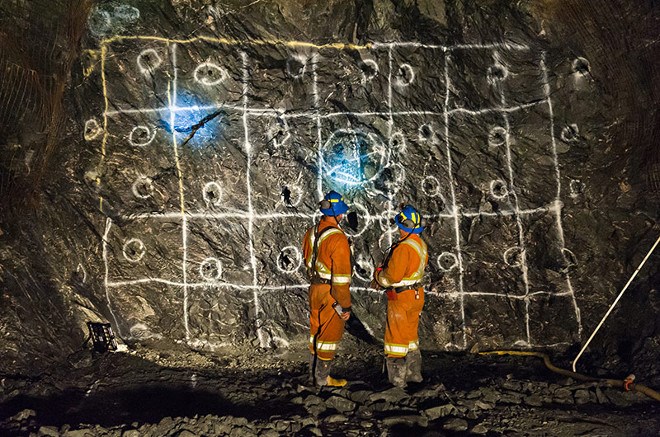An aggressive exploration program by Kirkland Lake Gold is producing positive results at its two cornerstone mines in northeastern Ontario.
The company reported making some high-grade drill intercepts during its exploration campaign at the South Mine Complex (SMC) of the Macassa Mine in Kirkland Lake.
An underground drill program at the mine’s 5300 Level intersected some new gold mineralization to the east with the discovery of a hanging wall system that could expand the mine’s resources.
Some of the results include intercepts of 65.8 grams per tonne (g/t) over 2.1 metres and 160.3 g/t over 0.3 metres. Follow-up drilling is planned for later this year.
Drill platforms have been set up on both the east and west ends of the 5300 Level to expand the resource laterally and at depth. Early results are suggesting there is a strong potential to do just that.
In a June 28 news release, company president-CEO Tony Makuch was pleased with the possibility of extending the longevity of Macassa.
“The mine is our Canadian flagship operation with current reserves totalling 2.0 million ounces at an average grade of 20.8 grams per tonne, a large base of resources to support future growth, and expected 2017 production of over 190,000 ounces at operating cash costs of under $550 per ounce.
“Today's drill results include the intersection of new high-grade mineralization with visible gold associated with the easterly strike extension of the SMC. Also encouraging is the continued expansion of the Lower SMC Zone, including the discovery of a new hanging wall gold system that returned multiple high-grade intersections and represents an important new target for future exploration drilling.”
Meanwhile at the Taylor Mine, near Matheson, the company said more gold is being found between the Shaft Deposit and West Porphyry Deposit, and at a depth below the East Porphyry and West Porphyry Deposits.
Surface drilling on targets east of the Shaft Deposit have produced results like 7.07 grams per tonne (g/t) over three metres and 16.46 g/t over 1.3 metres.
Underground, drilling has yielded assays of 20.69 g/t over 1.0 metres and 5.60 g/t over 10.9 metres.
"The aim of the exploration work completed to date is to discover and identify new high-grade targets and to define extensions and new mineralization at existing deposits,” said Makuch in a statement.
Taylor is one of Ontario’s newest gold mines and was picked up in Kirkland Lake Gold’s acquisition of St. Andrew Goldfields last year. It’s located along the historically productive Porcupine Destor Fault (PDF).
“We are very encouraged by the grades encountered almost two kilometres to the east of the Shaft Deposit,” added Makuch, “which demonstrate the extensiveness of mineralization at Taylor and the potential that exists to find new mineral deposits to support increased mine life.
“Based on results to date, we are also confident that mineral resources and reserves can be increased around the East and West Porphyry deposits. Concurrent with the ongoing diamond drilling program, which includes three surface drills and one underground drill, we are conducting an airborne geophysical survey to identify new targets, supporting our commitment to organic growth along the PDF.”




